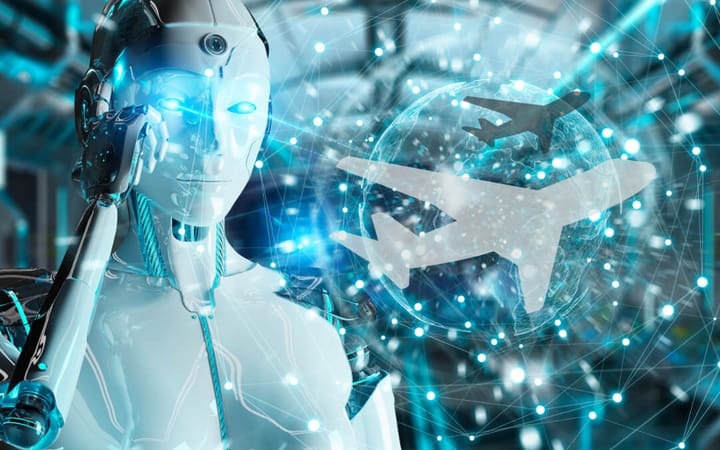The Role of Artificial Intelligence and Robotics in Space Exploration and Future Prospects
Artificial intelligence (AI) plays an important role in a variety of elements of space travel and explorations. It is used for a wide range of operations, from high-level decision-making to low-level data processing and everything in between.
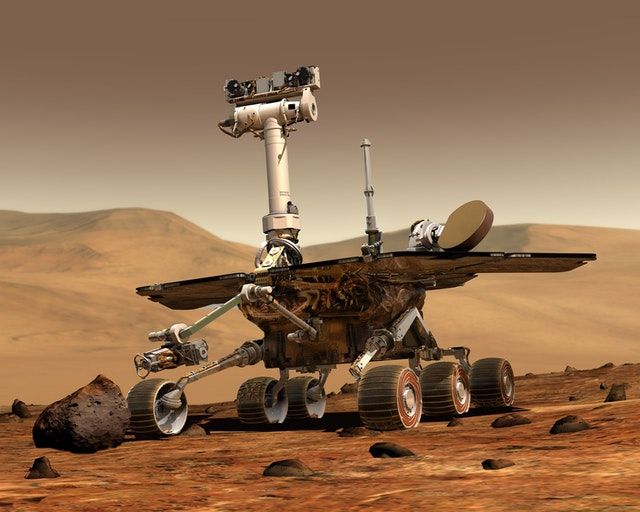
The secrets of space and its undiscovered regions have long captivated us. However, thanks to advances in artificial intelligence technologies, we can now explore space in more depth than ever before. Artificial intelligence plays an important role in a variety of elements of space travel. It may be used for a wide range of operations, from high-level decision-making to low-level data processing and everything in between.
Artificial intelligence (AI) is the imitation of human intellect by machines or computer systems. The robots were meant to duplicate and install the basic human ability to do labor intensive and repetitive jobs. It was also intended to undertake intensive data-driven activities in the future. AI refers to the branch of science that creates and constructs intelligent machines, rather than a single technology.
When a computer program can perceive its environment, learn from experience, reason about solutions to improve performance on some metric of interest (such as cost or energy consumption), solve problems creatively by breaking them down into sub-problems, and learn to recognize patterns in data, it is said to have intelligence.
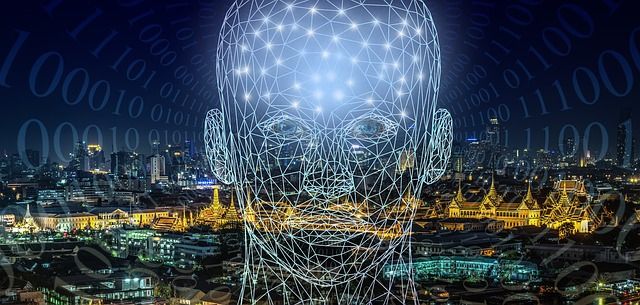
In this blog post, we will cover some of the many ways artificial intelligence plays an essential role in space exploration.
How do artificial intelligence and image processing help in space imaging?
Artificial intelligence helps in space imaging by processing and analyzing large amounts of raw data to allows groups such as NASA to more quickly locate anomalies that would otherwise take hours or days for scientists alone to find with the human brain. Exploring space with an astronaut will become problematic when we approach deeper space. Artificial Intelligence can also determine what information needs further analysis, saving time and money when it comes to processing new images from spacecraft exploring other planets.
AI successfully recorded and analyzed the first black hole image
The first black hole image was captured using CHIRP technology. Continuous High-Resolution Image Reconstruction using Patch Priors (CHIRP) is an algorithm that uses artificial intelligence to reconstruct images at high resolution from low-resolution input data.
CHIRP algorithm was developed by Dr. Katherine L. Bouman at Harvard University when she joined the Event Horizon Telescope Imaging team. At the Event Horizon Telescope (EHT), a gigantic interferometer with eight surface radio telescopes, Dr. Bouman and other scientists aimed to capture an image of shadow black hole Sagittarius A* by 2017. This capturing was never done in astrophysics before because it was only possible after EHT's construction. To create this ultra-high-resolution image, she needed an extreme Deep Neural Network model capable of synthesizing detailed resolution images from the noisy data provided by these radio telescopes.
She finally created one that uses more than 10 million parameters which is quite efficient for feeding into general-purpose deep neural network frameworks like Caffe and TensorFlow. CHIRP can work on any data with significant gaps and uncertainties, such as an image produced by Event Horizon Telescope using low-resolution images from many telescopes.
How do AI-based assistants help astronauts in space?
Researchers have found that more than 40% of an astronaut’s cognitive capacity is taken up by tasks on the spacecraft - meaning they have less brainpower to do simple things such as remembering phone numbers. One potential solution, NASA suggests, would be a robotic assistant who can take care of these types of mundane tasks for them.
An AI-based space assistant can help astronauts with their everyday duties or routine activities, so their mental focus remains intact for other important work and problem-solving. It can also provide supplementary instruction in areas where human expertise may not exist (e.g., how often should you clean your teeth), enabling astronauts to become more self-sufficient and comfortable during long missions without relying on others.
These AI-based assistants also help the crew in their emotional, behavioral, and social needs. For example, a robot can serve as a companion for the astronauts who miss their family or friends on Earth.
- It can help them maintain mental health and improve their mood by reading books to them, playing games with them, etc., which is often overlooked in space missions due to time constraints.
- AI assistants can provide emotional support where humans cannot (e.g., if an astronaut gets into an argument with someone, they can speak with it without feeling embarrassed).
- It can also be used as a social mediator by having the AI keep track of conflicts, resolve disagreements between crew members, and advise how to work through these.
- an intelligent robot helps astronauts with their emotional needs during long missions by reminding them that they are not alone in this beautiful universe while making sure they take care of themselves too (e.g., asking if they have eaten enough today).
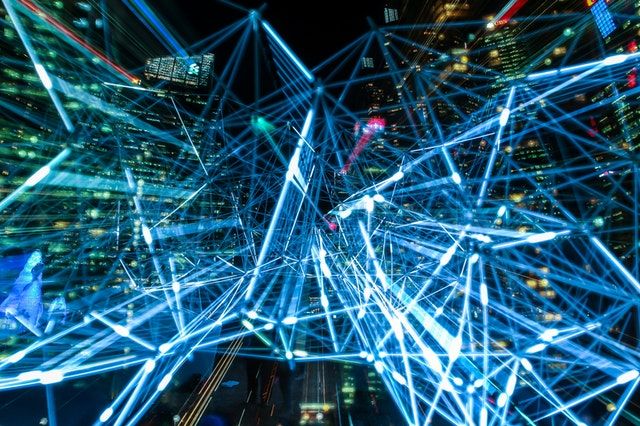
How are robots helping in space missions and space expeditions?
Space exploration robots have been a constant presence on all human-crewed NASA missions since 1997 when Sojourner was deployed on Mars Pathfinder mission. Space robots (robots) are being used in space missions and expeditions for various purposes. These include:
- Assisting NASA astronauts with their tasks aboard the International Space Station (ISS). The robots in space can help out by performing scientific experiments while suited up in a spacesuit that prevents radiation from reaching them, or they could be remotely controlled to complete more difficult repair jobs on the outside of ISS. For example, Robonaut is an anthropomorphic robot designed as a human assistant who resides at the ISS and assists astronauts during spacewalks. This allows humans to focus on other aspects, such as monitoring the environment around Earth, which helps protect us all when things like meteorites come close enough to enter our atmosphere.
- Acting as assistants across the surface of Mars by manipulating instruments and retrieving samples.
- Collecting data for analysis on Earth or carrying out experiments in environments where humans cannot survive without proper equipment such as the International Space Station or a manned mission to another planet. They can also help us observe other planets from afar.
- The use of robots in space missions will continue to increase because they are more reliable than human beings when it comes to completing repetitive tasks with precise accuracy, which is vital for many aspects of these expeditions. At the same time, we still have problems with communication delays between Earth and outer space. Robots are making exploration safer and more accessible today so that tomorrow humanity may discover what lies beyond our solar system's heliosphere - even if only through remote control.
CIMON is a round, friendly-looking robot with wide eyes and a big smile, presenting perfect interstellar robot design. CIMON stands for Crew Interactive Mobile Companion. It's not just one robot in space but an entire fleet of machines that work together to complete tasks on the ISS. There are four versions: The Robonaut series developed by NASA; Leonardo created by David Wettergreen and his team at Carnegie Mellon University's Robotics Institute; ATHLETE, developed by DARPA in California; and the Japanese Kirobo created with Toyota.
The first Unmanned space mission
The first crewless space mission was sent in 1958 by the Soviet Union and called Sputnik. The goal of this project was to explore outer space, but it had a political agenda as well: to challenge America and show that they were on par with their rival superpower.
Sputnik's success led to more missions from both countries into orbit around Earth; NASA launched Explorer I, USSR Luna-I (which failed), then Explorer III successfully reached orbit on July 31st, 1959, after two previous failures. At this point, there is no clear winner between these rivals for who can go out farther into space than the other one.
Robots are also being used in space expeditions to support scientists with tasks such as exploring our planet's vast and largely unknown oceans. They will be able to perform experiments at depths that humans cannot reach.
NASA's AI-controlled space navigation system
In 2009, NASA engineers began work on a new navigation system for deep robotic space exploration. The so-called autonomous flight controller (AFC) relies on artificial intelligence and predictive modeling to navigate spacecraft through unmapped regions of deep space without human input.
"This is very important for any future missions into uncharted territory," says Brandon Knopp, project lead at JPL's Autonomous Systems Division in Pasadena, California. "Decades ago, this would have been impossible."
But now that we can use AIs like Google Earth satellite data and lidar scanning maps created by cars driving down roads from GPS sensors, AFC has become possible - and it could soon be deployed aboard one or more upcoming deep space missions.
Knopp says AFC, which engineers developed at NASA's Jet Propulsion Laboratory in Pasadena, California, and is being tested to fly a rover on Mars called the All-Terrain Hex-Legged Extraterrestrial Explorer (ATHLETE), will enable spacecraft with limited onboard computer power, such as future rovers or landers - to navigate across unknown terrain without relying solely on human instructions. "This type of autonomous navigation has never been used before," Knopp says.
"It opens up new possibilities for exploration."
AI has helped to find new exoplanets through the Kepler telescope
AI is used to identify exoplanets by searching for patterns in large data sets. Kepler, named after a German astronomer of the 17th century, was designed to find Earth-like planets orbiting other stars. The spacecraft's instruments stare at one section of the sky and monitor it continuously. This helps scientists detect when something crosses in front of its star as seen from the Earth.
The data is collected over months and years. To ensure that nothing important was missed, NASA turned to AI for help. A neural network called the "Transit Validation by Neural Network" (TVNN) looks through all of Kepler's raw observations and identifies potential exoplanets in-transit events. In this way, TVNN makes it easier for scientists to identify more planets than they could have before with human-powered detection methods alone.
NASA's Kepler telescope has a limitation in that it can only detect exoplanets in transit if the planet is orbiting its star in a plane aligned with Earth's line of sight. If the alien world orbits behind their Sun, for example, we will never know about it! TVNN helps Kepler identify more planets by looking at all sides of each data point to find patterns and verify what they see as an actual signal rather than something else (like noise).
Google created AstroNet K2, a Convolutional Neural Network, to determine if a transit event is a false positive. It trains on the TVNN and helps to find more exoplanets that might have otherwise been missed.
The Kepler telescope has not only helped scientists identify over 2000 potential new worlds but also demonstrated how AI could help detect planets in ways our human eyes cannot see. With AstroNet K-series, Google's contribution to improving current detection methods for future missions like TESS, it will be even more accessible than ever before to discover Earth-like alien life forms outside our solar system.
AI helped increase NASA's detection rate for potential exoplanet signals detected by Kepler—from 60% success without AI to 97% success with AI.
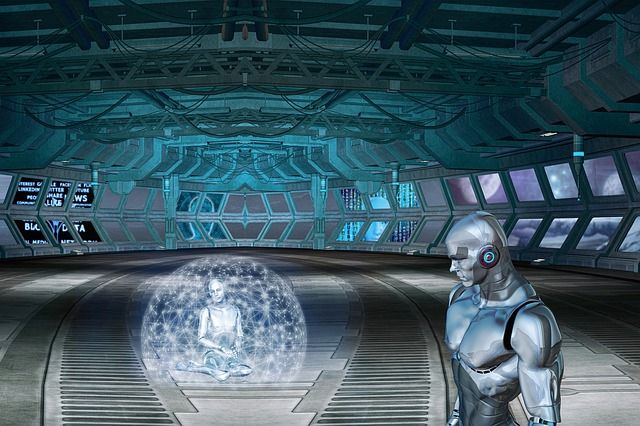
AI assists in identifying the tiniest space debris
Space debris is a term used to describe the objects in orbit and released by human activities. It can be anything from old satellites, rocket stages, or bits of spacecraft launched but never made it into space. An estimated 500 million pieces of space rubbles are encircling Earth today with the velocity of 17,500 miles per hour.
Space debris is a big problem for space exploration. It can cause satellites to fail, and their missions are interrupted, which has economic and scientific consequences. Debris also poses an existential risk to humans on Earth because it could destroy our planet's ozone layer if left unchecked in the atmosphere.
AI stands to help with this issue by enabling new technologies such as autonomous robotic arms that remove trash from orbit before it causes trouble or helps manage current systems like International Space Station solar panels without disruption -- all while requiring fewer resources than maintaining human crews aboard ISS.
AI can also be used in conjunction with satellites to detect and track space debris. It could help guide them through dangerous orbits or even move the objects out of orbit, all while being more efficient than human-operated systems. AI will significantly impact this problem as it continues to develop new solutions like these that will mitigate the risks of space debris.
Futuristic approaches assisted by AI in space exploration
AI is being used in many new ways for space exploration. AI robots are paving the way for the future of space exploration by exploring distant planets, moons, and asteroids. These autonomous explorers could lead to a more efficient and cost-effective way of gathering data about objects that may not be accessible from Earth or closer orbit around other planets. Deep-learning algorithms can also help us understand the surfaces present on small bodies that we don't have human astronauts visiting yet with new instruments like cameras and spectrometers. This technology used to explore space may allow scientists to identify resources such as minerals, water ice, or even evidence of life before sending humans into hazardous environments where they might suffer ill effects without proper protection.
In addition, NASA has developed a software system called HELO that can be used to identify "Hazards in Electromagnetic Fields" and other threats.
AI is set to play a massive role as technology continues its rapid development when it comes to future space exploration. Systems like Mars Polar Lander and Deep Space2 could help NASA plan complex maneuvers for landing on Mars or asteroids while maintaining safe distances from hazards such as craters, boulders, or steep slopes. There are even plans for developing a program used to study the solar system with probes powered by deep-learning neural networks operating without human input under various scenarios, including when communication fails during missions outside of Earth's orbit. This type of autonomy would allow us much greater flexibility in sending robotic explorers where they're needed most and increase their chances of success with less risk to the astronauts on board.
What if a robot can go to the Sun?
Intelligent space robots are also taking on more complex tasks that would be too risky for astronauts. NASA's Parker Solar Probe will explore the Sun's atmospheric corona with unprecedented intimacy and is scheduled to launch this summer. The probe is designed to withstand heat levels of up to 1370°C (2500°F) as it flies within 6.5 million miles from the Sun - closer than any human-made object in history. With a range of scientific instruments onboard, including an imaging spectrometer and magnetometer, we can learn much about our star and how it interacts with planets like Earth or Mars from outside its atmosphere. This information could help us better understand solar storms, known to disrupt communications technologies such as satellites and power grids on Earth when they reach their peak.
In the future, AI-based space assistants may assist astronauts in deep space exploration, and robonauts could explore new planets. NASA is already working with companies like Space Systems Loral to test how artificial intelligence can help them reach for the stars. And it's not just about exploring our solar system--one day soon, we might be able to make contact with extraterrestrial lifeforms thanks to AI, too.


